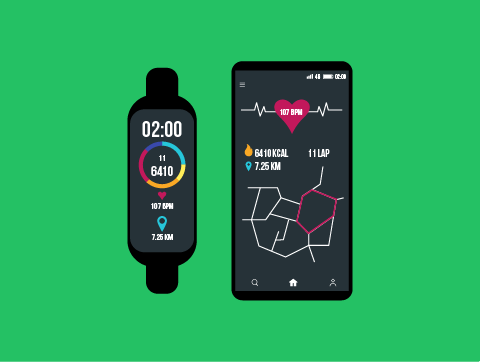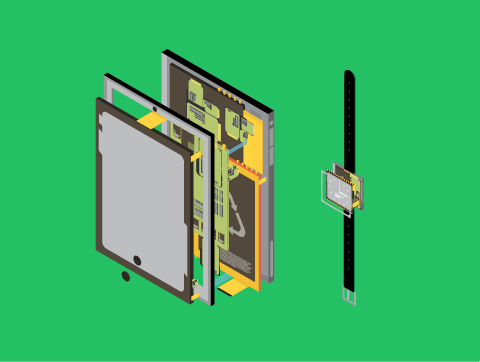Introduction
As we learned in the last lesson, there are different types of computer systems, each with its own role.
These computer systems have similar internal components, but there are differences.
In this lesson, we’ll learn about the features of:
- Servers
- Mobile devices

Servers
A server is a computer that manages access to different resources and services over a network.
Other devices, like personal computers, connect to the server via various means, such as Ethernet cables and Wi-Fi. These computers can then access the resources and services the server is providing.
Some common examples of servers and the services they provide include:
- Web servers – host web pages and associated files, providing access to them over a network.
- Mail servers – sends and receives emails over a network.
- File servers – stores and manages access to files and folders over a network.
- Print servers – provide and manage access to printers over a network.

Internal Components of Servers
The internal components of a server are very similar to those of a PC. There is a motherboard, CPU, memory, and storage. However, there are certain differences between these components.
Server CPUs generally have more cache memory available. They can also have many more cores than desktop CPUs, as servers generally use multiple-core CPUs more efficiently.
The main memory used in servers will still be DDR RAM, much like a desktop, however, it will be more likely to also be ECC (error-correcting code) RAM.
This is designed to correct errors that might appear in volatile memory which is usually much more important in servers (which often handle a lot of very important data) than in PCs.

Internal Components of Servers
For storage, hard disk drives are still more common than solid-state drives due to the need for large amounts of storage (though an SSD may be used for things like boot drives).
The HDD you will use with a server will usually be different from that of a desktop, though.
HDDs have moving parts, which cause them to vibrate. Servers may have stacks of hard disk drives as they often have huge storage requirements.
This can lead to a huge amount of vibration that will damage the moving parts inside the HDDs, so server HDDs have additional protection from this vibration.

Internal Components of Servers
Servers also rarely have graphics cards or even an integrated GPU on the motherboard, as they are not usually used for graphically intensive tasks.
Generally speaking, server internal components will be more expensive for similar speeds or capacity but have greater quality checks, better error prevention & greater energy efficiency.

Mobile Devices
A mobile device is a computing device that is designed to be portable by being compact, light-weight and capable of running for extended periods on battery power.
They’re also almost always capable of connecting to the internet wirelessly, either through mobile broadband or Wi-Fi.
Examples of mobile devices include tablets, smartphones & smartwatches.
These devices can also be classified as personal computers and multi-functional devices.

Internal Components of Mobile Devices
With mobile devices, all of the main internal components (CPU, GPU, memory, storage, etc.) are built into a single integrated circuit.
This is known as “System-on-a-Chip”. As these components are built directly into the chip, they are not replaceable, so upgrading individual components is not possible.
However, this saves a lot of space allowing for a larger battery, which is extremely important in modern mobile devices.
It is also more efficient allowing for far greater performance than PC components that have equivalent power.
It can also lower power requirements, saving on battery & reducing the heat produced (which is important as we don’t have space in a mobile device for a fan).

Internal Components of Mobile Devices
Many of a mobile device’s internal components are specifically designed to save space and reduce power consumption.
The main memory uses LPDDR RAM, which uses less power than traditional DDR RAM.
For similar reasons, they also use Flash Memory for storage (we’ll learn more about this type of storage in a later lesson).
Another key feature of mobile device internal components is that mobile CPUs have a different architecture from those used in desktops, laptops, and servers.
They instead use the ARM architecture. We’ll also learn more about this in a future lesson.

Lesson Summary
A server is a computer that manages access to different resources and services over a network.
Servers have similar internal components as personal computers but with unique features to enhance the reliability & performance of these components.
A mobile device is a computing device that is designed to be portable.
All of the main internal components are built into a single integrated circuit with mobile devices. This is known as “System-on-a-Chip”.
In general, the internal components of mobile devices are designed for saving space & reducing power consumption.
